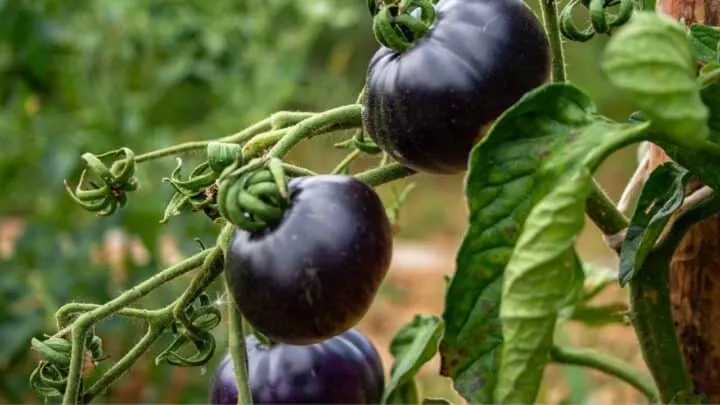Tomatoes are found in a wide range of colors, sizes, and varieties.
You need to keep a very close eye on this plant when you are cultivating it, as the plant is prone to pests and diseases.
Red tomatoes are a common thing in vegetable gardens but have you heard about blue tomatoes?
Let’s discuss some varieties of blue tomatoes found in the world.
We have gathered everything you ought to know about the varieties, from the fruit size to temperature and light requirements.
Table of Contents
What Are Different Varieties of Blue Tomato?
The varieties that have unique color includes the Indigo Ruby, Blue Chocolate and Blue Gold. Other varieties with some distinct qualities and color include Blue Bayou, Blue Beauty, and Purple Bumblebee. All these varieties are grown because of the variation in color, size, shape, and taste.
Blue Bayou
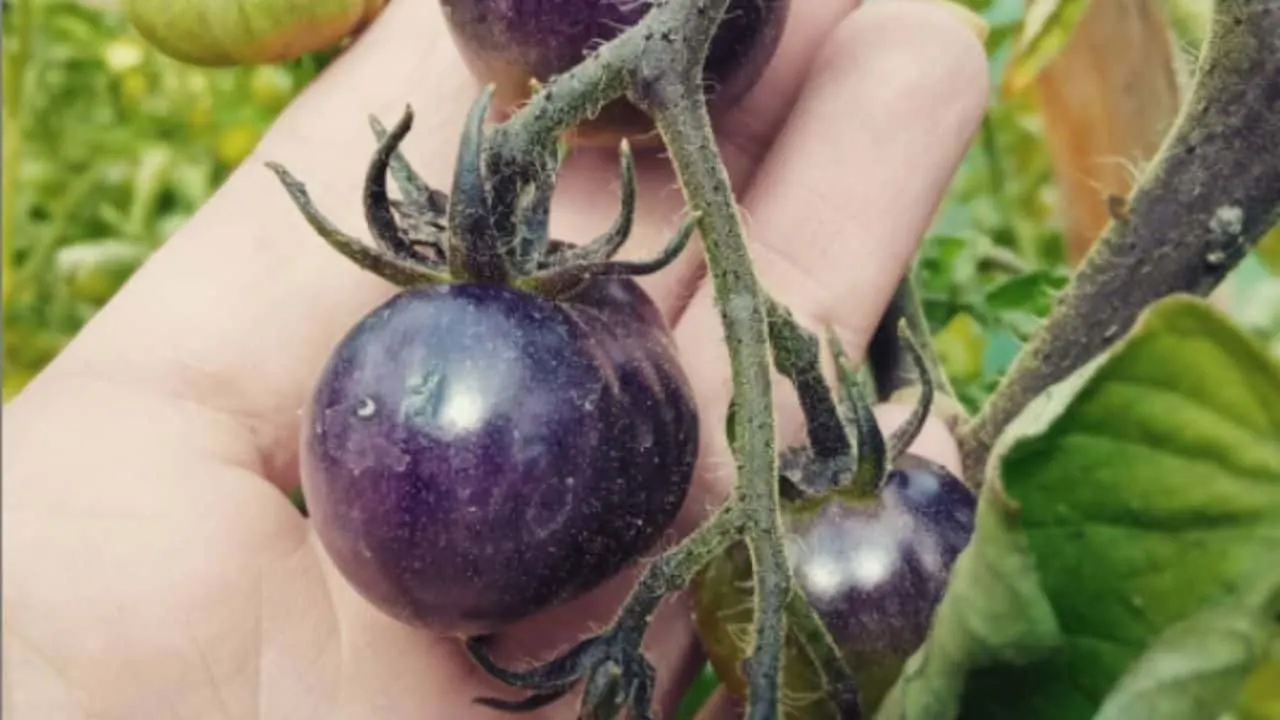
Photo Credit: @romosphere on Instagram!
Blue Bayou, also known as Solanum Lycopersicum, was bred by Tom Wagner in the state of Washington.
It has a blue to dark purple color, and the flavor is between being sweet and tangy.
Light and Temperature
This tomato requires direct full sun. This helps it get the dark blue color it has.
When you sow your seeds for germination, it is very important to maintain optimum temperatures for this plant. It requires a minimum of 59 degrees Fahrenheit (15 degrees Celsius).
Soil
The soil you use for growing this tomato needs to be well-draining and acidic.
However, alkaline and neutral soil will also work just fine. The soil medium’s texture needs to be loamy.
Germination
The germination process of Blue Bayou takes around 7 to 14 days.
When you observe two leaves on the tiny seedlings, transfer your plant into a 3 inches (8 cm) container.
You can sow the tomato anytime from January to April. Transplant the plant outdoors when the frost threat has passed.
Feed and Fruit
Blue Bayou requires a fertilizer that is high in potassium. Feed your tomato once the fruit starts developing.
The fruit produced by this variety is round in shape. It’s a vibrant red in color and is small in size, like a cherry.
Indigo Ruby
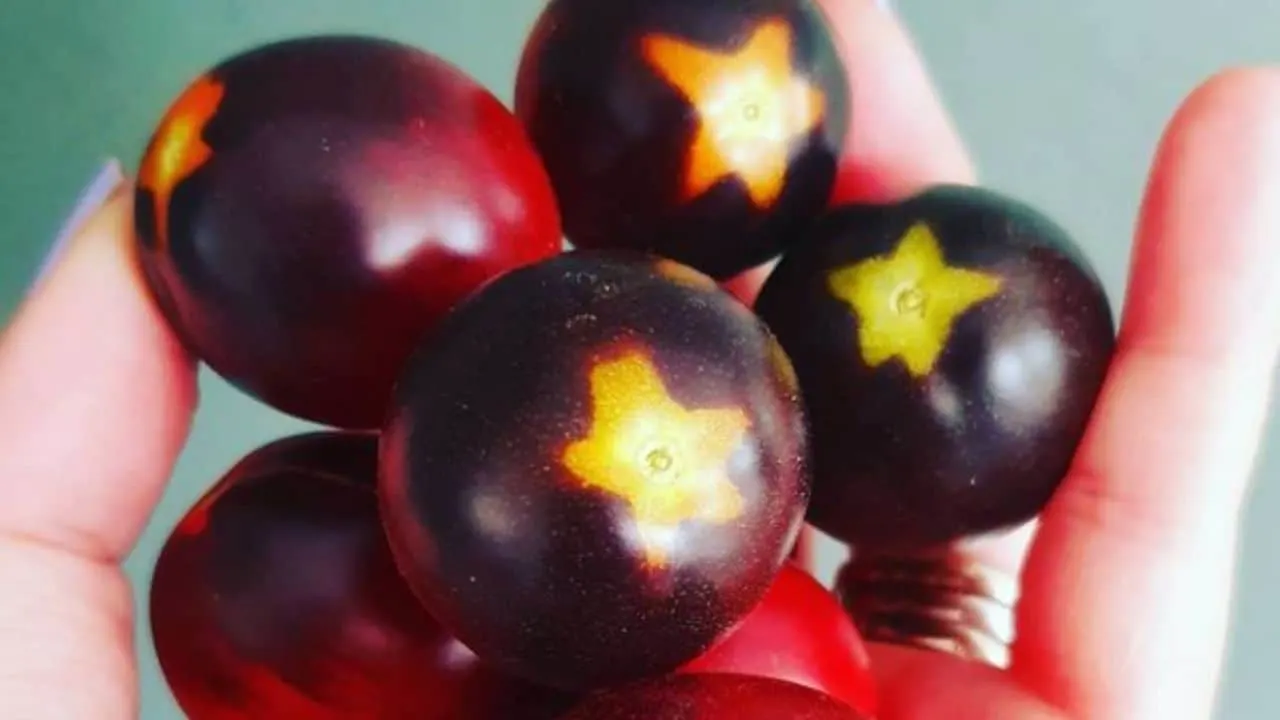
Photo Credit: @kims_mini_food_forest on Instagram!
Indigo Ruby is also known as the Solanum Lycopersicum Hybrid.
It takes around 75 days to mature with a medium growth rate and 6 to 8 tomatoes per cluster.
They have a pleasant aroma, sweet flavor and are quite rich in Vitamin E.
Light and Water
Indigo Ruby requires full sun in order to grow and get the stunning purple color.
If you plan to grow them indoors, it is recommended to place them in a location where they will receive a good amount of direct sunlight.
It is suggested to water your Indigo Ruby thoroughly twice a week.
Water the plant in the early hours of the morning so that water dries up until the evening and there is no danger of waterlogging.
Feed and Fruit
Indigo Ruby prefers food once the fruit starts to develop.
Fertilize your plant once every month after the first application. If you feed it early, it won’t yield any tomatoes but a big leafy plant which is of no use.
The fruit of this tomato is shaped like plum and has a bright yellow color with a purple cap.
The size of the fruit varies from being 0.75 to 1 oz (21 to 28 grams).
Blue Chocolate
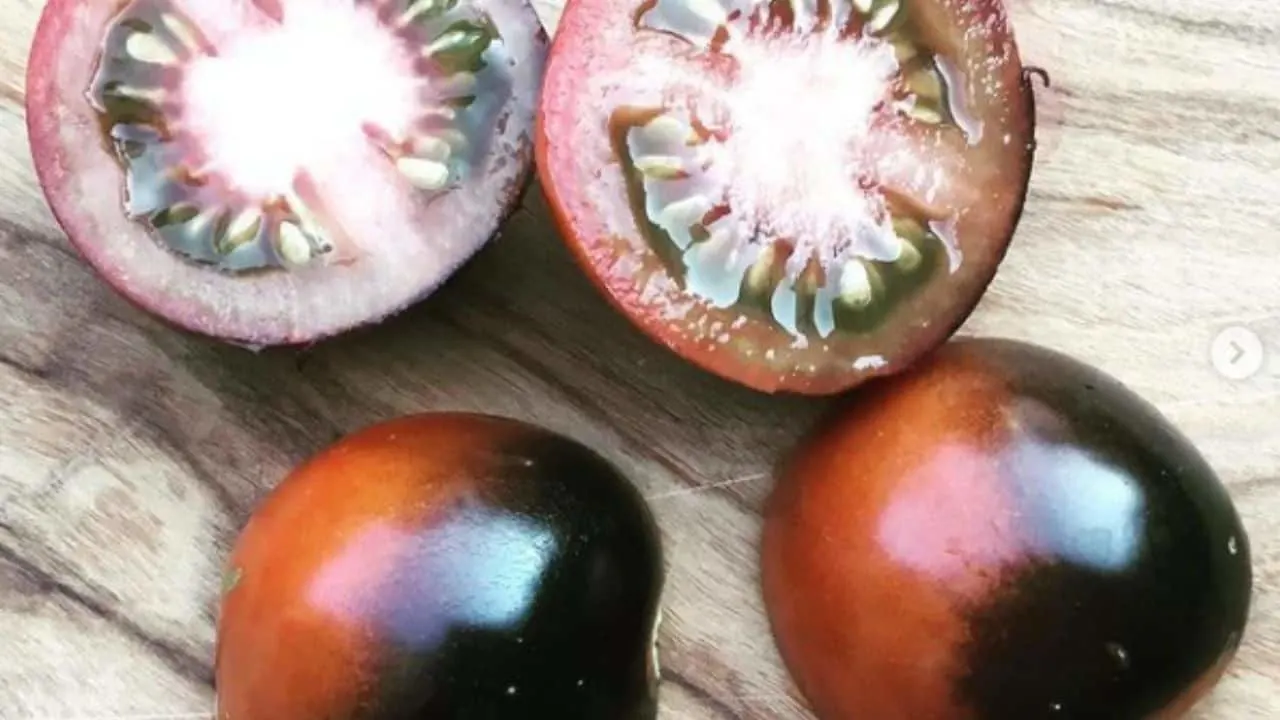
Photo Credit: @foode17feed on Instagram!
Blue Chocolate is among the various varieties of tomatoes produced at Wild Boar Farms by Brad Gates.
It has a great flavor that’s both sweet and bold, with a lot of juice.
Fruit
The fruit of Blue Chocolate is shaped like a grape and is found in brown color.
The fruit is about 1 to 2 oz (28 to 56 grams) with a very sweet and delicious flavor.
This vigorous tomato continues to produce fruits throughout the growing season. The fruit grows on vines in the form of a tight cluster.
Nutritions
The presence of Anthocyanin, an antioxidant, is something that makes Blue Chocolate an important variety.
The antioxidant helps reduce inflammation, fight diseases, and also slows aging.
Previously only wild varieties of tomato contained Anthocyanin.
In comparison, the garden tomatoes contained this antioxidant in their stems and leaves, which were not safe for consumption.
Blue Chocolate is a good source of iron and calcium, you will also find a good amount of sulfur, potassium, and phosphorus in this variety.
This tomato variety is quite rich in vitamins A, B, and C.
Usage
Blue Chocolate is preferred to be eaten directly from the vine because of the fresh and sweet flavor it has. You can use this variety in salads paired with spinach, lettuce, or cucumbers.
Many professional chefs use them with onions, chilies, and garlic to develop a strong and good flavor in the meal.
It can also be combined with herbs like basil, chives, and parsley and used as dressing after heating them together in a pan with some olive oil.
Blue Chocolate tomatoes have a fantastic shelf life and can survive in your kitchen for a good time.
You can store them at room temperature while waiting for them to ripe and later transfer them into the refrigerator to slow the decaying process.
Blue Beauty
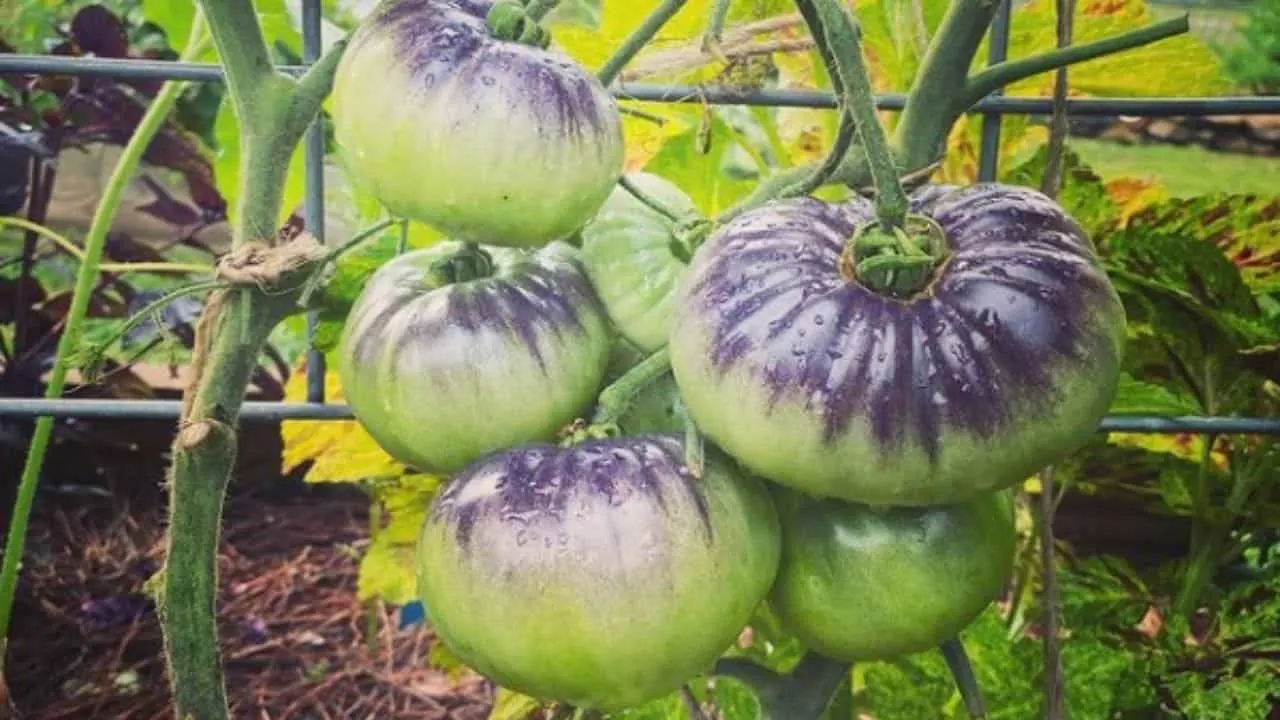
Photo Credit: @cosmopolitancornbread on Instagram!
Blue Beauty is part of the blue varieties of tomatoes and has a blue-black color which has to be the most unique tomato you’ll ever grow.
The variety was developed with special breeding and selection techniques at Oregano State University.
Soil and Fertilizer
The soil should be fertile, moist, and compost-amended. You can apply tea compost to the plant every few weeks.
The temperature of the soil must be maintained between around 80 degrees Fahrenheit (27 degrees Celsius).
It is ideal to sow 2 to 3 seeds per pot in order to get strong seedlings that can be safely transplanted.
Transplantation should be done when you observe three sets of leaves on the seedlings.
Transplant the seedlings outdoor only when the last frost has ended so as to avoid the tomatoes from dying.
The seedling of this variety needs to be fertilized every 7 to 10 days. The fertilizer should be water-soluble or liquid fertilizer to help quick absorption of nutrients.
You should avoid giving an excessive amount of nitrogen to your tomato as it only produces a large plant with poor fruit.
Fruit
The young fruit of Blue Beauty is indigo in color when exposed to direct sun.
Just like the Blue Chocolate variety, this tomato also contains Anthocyanin, an antioxidant that has great benefits.
You can harvest the fruit when it is soft to touch and has red, rosy color. When the shoulder of the fruit turns indigo, it is ready to be harvested.
Shoulders are sapphire in color initially but slowly turn to purplish color as the fruit ripens.
The fruit develops in clusters on a vine and has great resistance to the sun.
Blue Gold
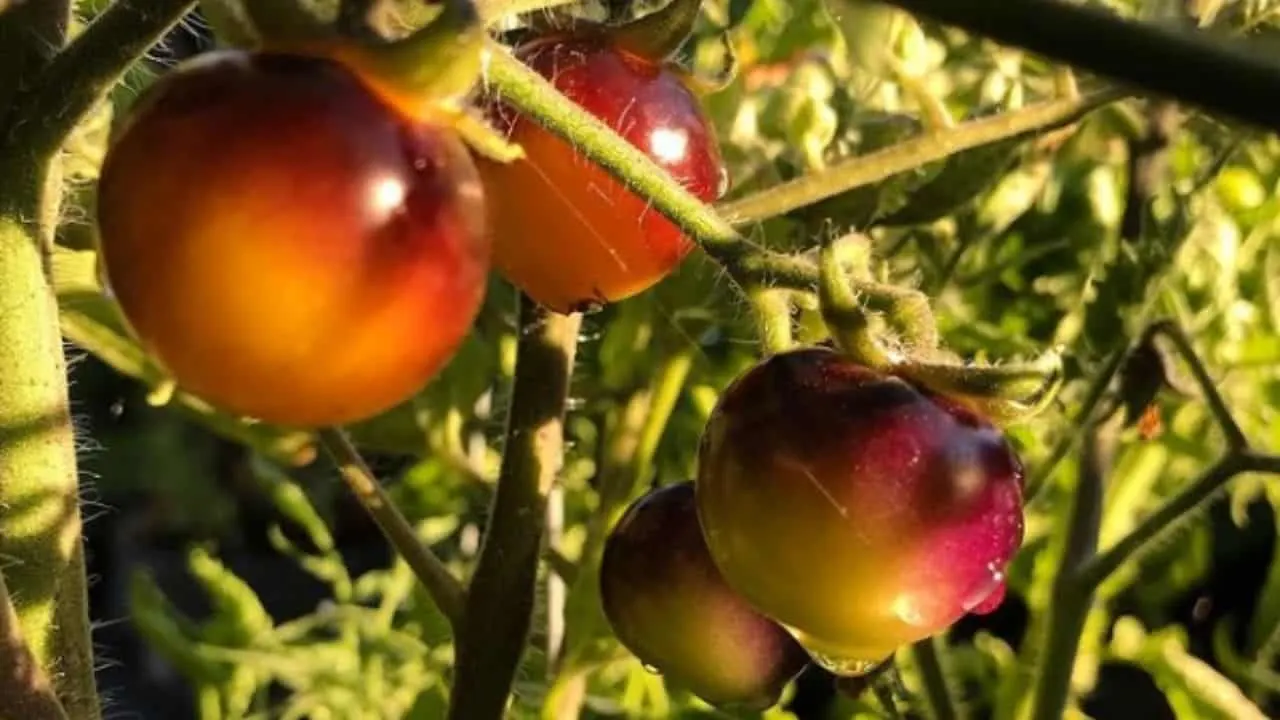
Photo Credit: @tinygreenproduce on Instagram!
Blue Gold is yet another variety of blue tomatoes that was created at Wild Boar Farms by Brad Gates in 2014.
However, this variety is not very stable and keeps changing in shape and color.
Light
The skin of these tomatoes is bright yellow in color, and as soon as they are exposed to the direct sun, the skin changes the color to dark blue.
This change in color won’t occur if the tomatoes are placed in a shaded area, they will keep their golden color.
This whole change in color occurs due to the presence of Anthocyanin.
This plant produces Cherry tomatoes with a savory complex, with a tangy taste.
These cherry tomatoes have an excellent shelf life and would survive a week or two at room temperature.
Growth
Since these tomatoes are so delicious with a sweet flavor, every gardener wants to achieve the best out of them when they grow them.
In order to grow them healthily, start by planting them indoors in a sterile soil medium. Ensure that the soil temperature is more than 70 degrees Fahrenheit (21 degrees Celsius).
Some people use heat mats to provide some heat however, if you place the pot on the fridge, it will also work perfectly.
When you begin to observe the true leaves on your seedlings, transfer them to 4 inches pot.
It’s also important to harden your plant so that it can survive in the outdoor temperature.
It is recommended to transplant these tomatoes outdoor once the summer season begins.
Fruit
The fruit is small in size and is round in shape. The fruit’s color varies greatly from being red, yell0w, to bicolor.
The fruit weighs around 2 to 4 ounces (56 to 110 grams). Each cluster produces a group of 5 to 8 tomatoes.
Purple Bumble Bee
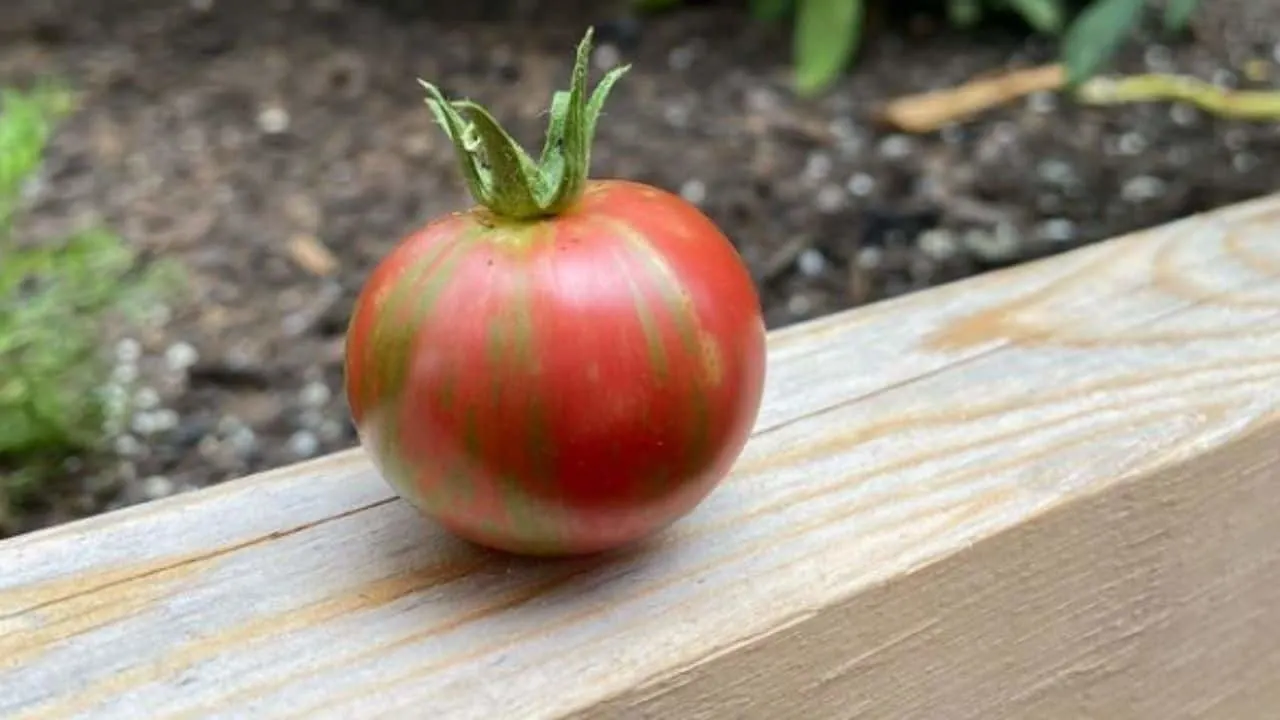
Photo Credit: @crystalwallace on Instagram!
The Purple Bumblebee is a cherry tomato that has an eye-catching appearance.
It has purplish color and has got metallic green stripes throughout. The flavor of this variety of tomato is complex but sweet.
Light and Growth
The Purple Bumblebee can be cultivated in a greenhouse or outdoors in a sunny location but should be slightly shaded.
The stunning stripes it has are due to exposure to the sunlight.
The seeds are sowed 1/16 inches deep during the spring season. Its germination period takes up to 2 weeks.
It needs an adequate amount of care to grow properly.
The tomatoes need well-draining and moist soil, which should be fed with good quality fertilizer when needed.
Soil temperature needs to be around 70 to 95 degrees Fahrenheit. You also need to water the growing tomatoes frequently but make sure not to flood them.
Temperature
When you start growing this variety indoors during the spring season, provide it some warmth.
You can use heating mats that can be removed once the seedlings begin to germinate. Now your seedlings are ready to be placed in bright light.
The seedlings need to be grown at 50 degrees Fahrenheit (10 degrees Celsius) for about 6 to 8 weeks.
You can transfer the early season tomatoes outdoors when the temperature at night is above 45 degrees Fahrenheit (10 degrees Celsius).
Blue Tomatoes Benefits
There are a number of benefits of growing blue tomatoes. To mention a few
- These varieties of tomatoes have a very good shelf life, around 60 to 70 days. Hence, they can survive at room temperature longer than regular red tomatoes.
- They are some of the most stunning vegetables you can grow either inside your home or in the garden. They have got distinct colors and sizes that will be an appeal to any eye.
- Another benefit of blue tomatoes is they are very resistant to pests and diseases.
- You can sow the seeds of these varieties early in the spring as they are frost-resistant.
- Blue tomato varieties require very minimum care. That is, you can plant them anywhere in a warm environment, and you won’t have to water them frequently.
Frequently Asked Questions About Blue Tomato Varieties
When are blue tomatoes completely ripe?
The blue tomatoes appear ripe when you notice their color changing from blue-purple to a brownish color. The tomato also seems softer than a regular tomato when it has ripped. Another indication of ripe tomatoes is the change in color of their bottom from green to red.
What causes the blue color in blue tomatoes?
Blue tomatoes are often referred to as purple tomatoes and are found in various parts of the world. The blue color they have is due to the presence of high levels of Anthocyanin, which is an antioxidant and a pigment found in others like blackberries, blueberries, etc.
Are blue tomatoes safe for consumption?
There is no harm in eating the blue tomatoes, and they are often eaten directly from the vines they grow on. The different varieties present a sweet, tangy flavor. The Anthocyanin found in them is a great antioxidant that will protect you from various diseases, including cancer and cardiovascular problems.

Daniel has been a plant enthusiast for over 20 years. He owns hundreds of houseplants and prepares for the chili growing seasons yearly with great anticipation. His favorite plants are plant species in the Araceae family, such as Monstera, Philodendron, and Anthurium. He also loves gardening and is growing hot peppers, tomatoes, and many more vegetables.

